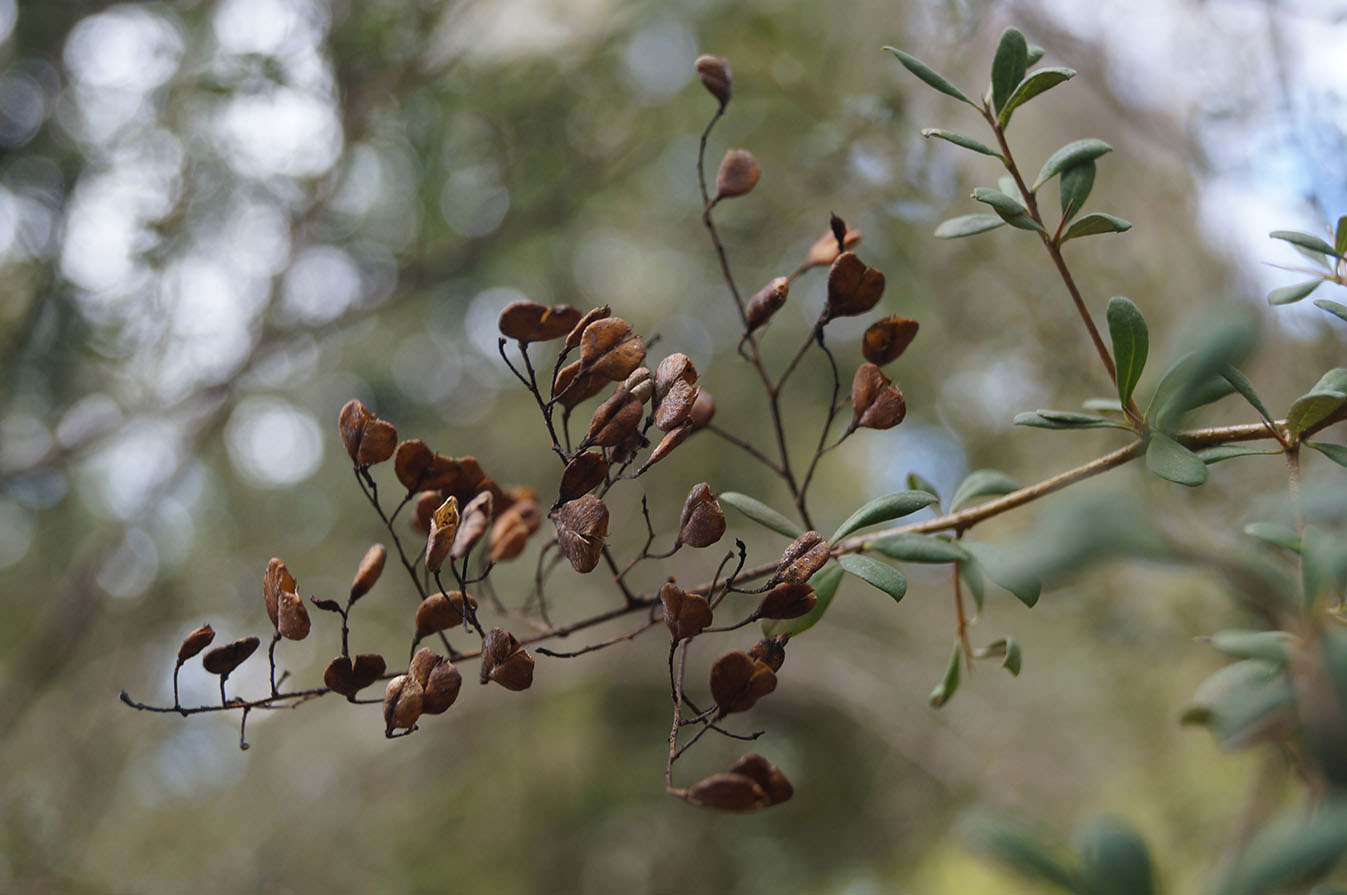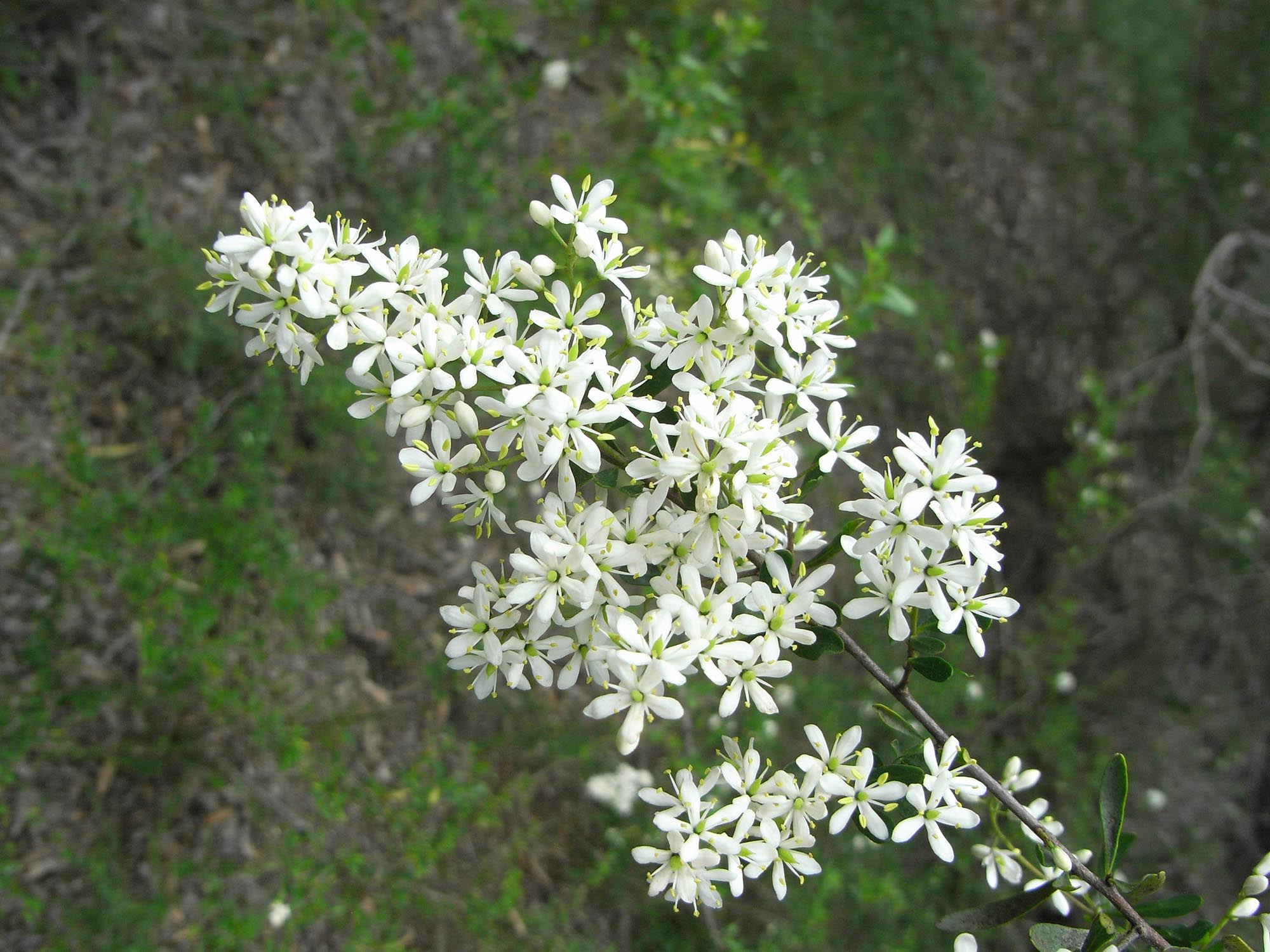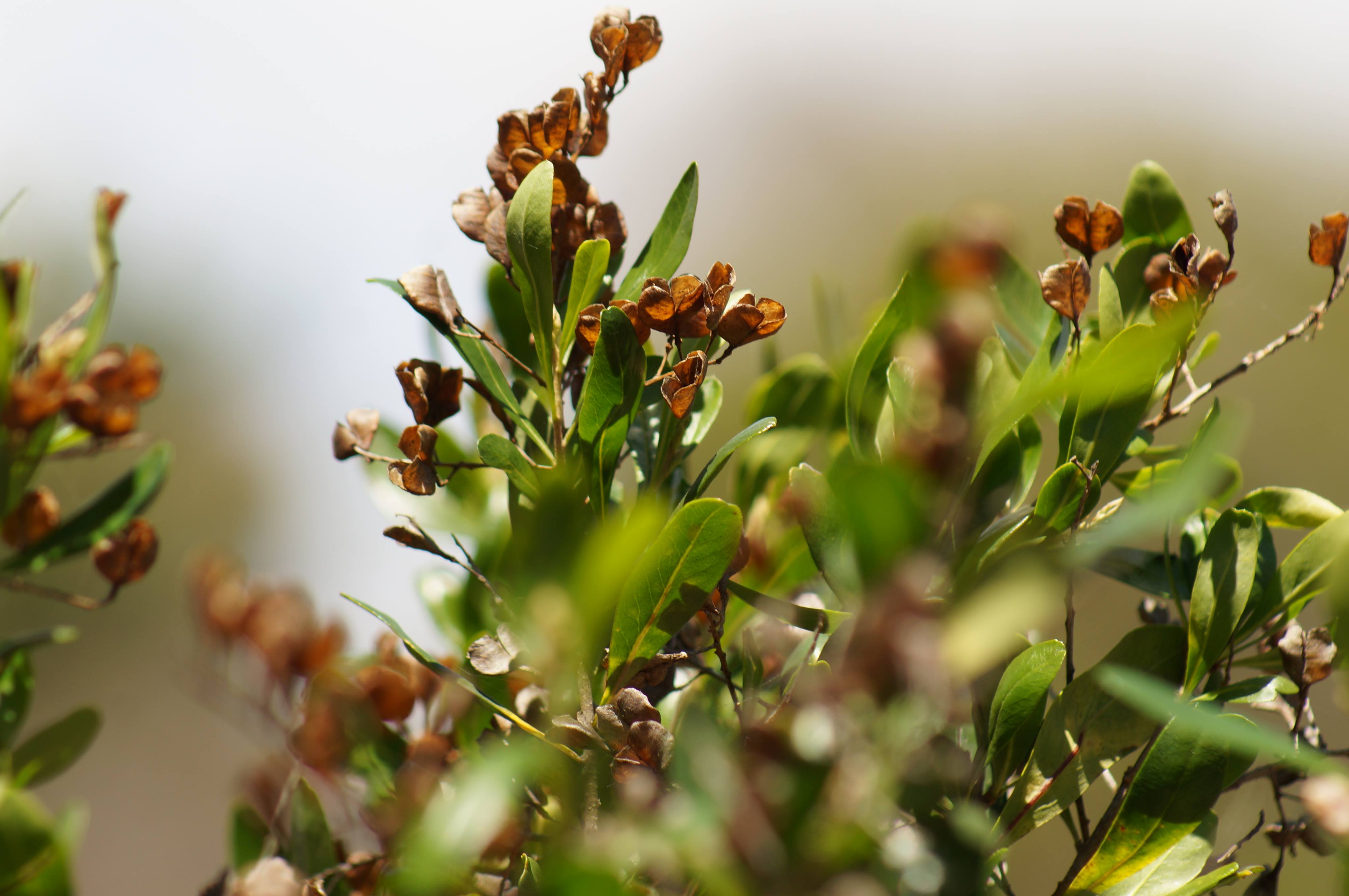Fruits/Seeds
Dark brown, flattened capsules in clusters. Each capsule to 7 mm long and 9 mm wide containing on average 4 seeds. Seeds reddish brown, flat and oval to kidney shaped.
Field Guide
Improve your identification skills. Download your Sweet Bursaria field guide here!





